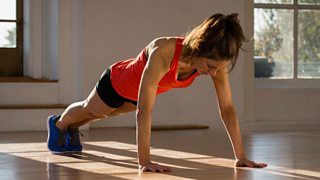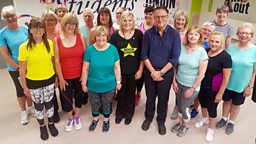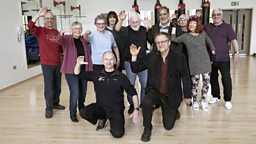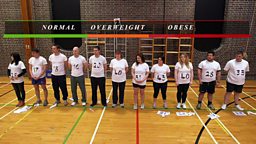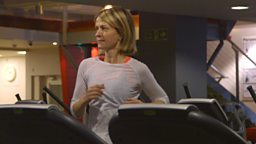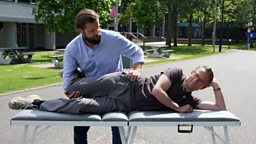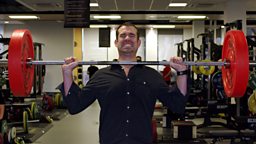Is there a short-cut to getting fit?
Experts are constantly telling us that if we’re not getting enough regular exercise we’re depriving ourselves of possibly the most powerful medicine of all, and the government recommended guidelines are 150 minutes of moderate intensity exercise a week. But is this really the best way for all of us to get the benefits?
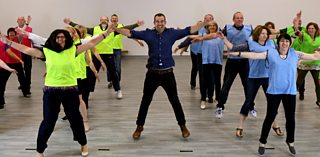
Only about 1 in 5 of us actually achieves the government’s 150 minutes guidelines – mostly because of lack of time (although ). Over the last few years there has been a shift towards short but intense workouts, a training concept known as high-intensity interval training or HIIT. One of the most appealing things about HIIT is that sessions can be completed in as little as 15 minutes per week.
The promise is tempting: maximum impact in minimum time – with claims that HIIT can make you much fitter than exercises that take twice as long, being better at reducing body fat, increasing strength and improving insulin sensitivity – which reduces our risk of getting type 2 diabetes.
There are studies to back these claims up – but they are based on tests undertaken in lab conditions on special exercise bikes – and usually either on rather fit students or those with pre-existing health problems.
So, we wanted to find out firstly whether HIIT was as good as has been claimed for ALL of us, but then to find out whether there were more practical alternative ways to get its benefits for those of us with only a few minutes spare at home, or even those who couldn’t undertake such intense physical activity.
Dr Beth Phillips and Dr James Blackwell from the University of Nottingham have been researching the benefits of HIIT, and with their help we took a group of 24 volunteers aged between 40 and 60 years old who all have jobs and lifestyles that they describe as pretty sedentary.
We then broke them in to four groups – each trying a different form of exercise.
Group 1: Moderate Intensity Exercise
The first group undertook to do the recommended government guidelines of 30 minutes of moderate exercise, five times a week.
This involved things like cycling and jogging - enough to make you start to break sweat, but during which you would still be able to comfortably hold a conversation with someone.
Group 2: ‘Lab HIIT’
Our second group were assigned the standard HIIT on a special resistance bike, which needs to be done in a lab or gym.
They did 3 supervised cycling sessions each week, with 5 bouts of hard cycling lasting for 60 seconds with a 90 second rest in between each one.
Group 3: ‘Home HIIT’
Beth helped to devise a series of home exercises for our contributors that would simulate the high intensity of HIIT without needing a resistance bike.

This group did high intensity exercises of running on the spot, ‘mountain climbers’ and star jumps.
Just like Group 2, our Home HIIT volunteers did 5 bouts of hard exercise (60 sec each) interspersed with 90 sec rest periods, 3 times each week.
Group 4: Handgrip exercises
Our fourth and final group tried a relatively new exercise, which might suit people who are less physically able to do high intensity exercises. It’s called Grip Strength Dynamometry, which is a hand grip task.
Just like the HIIT groups, this was a short, interval training task. They had to squeeze a handgrip dynamometer (an instrument that measures your grip strength) for 2 minutes at 30% of their maximum strength, with 2 minutes rest in between each squeeze. They did this 4 times in a row, 3 times each week.
(Squeezing a stress ball, or even just some rolled-up socks, is a cheap and easy alternative.)
What we measured
All our volunteers were weighed, had their fitness assessed using a standard test called the VO2 max test, and their blood pressure taken before and after the 4 week experiment.
Results
Weight loss. None of our groups saw significant weight loss, but that is only to be expected over just 4 weeks.
Fitness. Of our four groups, our Lab HIIT group showed the most improvement at 17%. Our Home Hit team also showed a similar improvement not far behind our lab hit group at 12%. Both of these were statistically significant (paired t-test).
The Hand Grip and Moderate Exercise group did not show statistically significant changes.

VO₂ max is a good measure of how good your heart and lungs are at getting oxygen around your body – and is an excellent indicator of not just general fitness but also future health.
Blood pressure. Here it was the hand grip group that showed the biggest improvement – a 16% average drop, that was statistically significant. The moderate intensity activity group showed a small average decrease, and the HIIT groups no significant change overall.

The hand grip training therefore seems to be a new and surprising way of training for cardio vascular health improvements, and could be very useful for people wishing to decrease their blood pressure.
How it works
HIIT is all about intensity – you don’t have to do it for very long, but you have to put as much effort as possible in for short bursts.
The principle is thought to be the same for the hand grip squeezing – you’re putting your body under a bit of stress, just for a short while, on and off and so getting it used to being able to deal with it.
Dr Beth Phillips said ‘We think it’s basically you get improved vascular function, so your vessels become more adept at responding to a stimulus, and therefore they lower your blood pressure because the resistance in your blood vessels becomes much less’.
So if you’re used to slogging away on jogs and don’t feel like you’re seeing much benefit, or never felt that exercise was for you, then any of these kinds of interval training could be something that will result in a real difference in your health.
However, because it is a rigorous exercise regime it is worth getting a check-up before embarking on it especially if you are over 40 or have been inactive for a long time.
Before each session of HIIT, you should also do 2 minutes of warm-up exercises like walking on the spot, joint rotations and low intensity versions of the exercises you are about to do.
Related items on Trust Me
Related Links
iWonder guide
-
![]()
Short bursts of exercise, known as High Intensity Interval Training, can improve your cardiovascular fitness in only a few weeks.



